Dogwood rank among the most popular trees in America, as they offer aesthetics to a landscape regardless of the season.
Their beauty is especially enhanced in the springtime when flowers of fantastic pink or white arrive on the scene.
Dogwoods grow rather quickly and thrive without a lot of care, but these showy trees can lose their glamour when their leaves begin to turn brown.
Table of Contents
Dogwood Leaves Turning Brown
Dogwood leaves can turn brown due to overwatering, under-, or overfertilization. It could simply be that it’s planted in the wrong place. Various pests and diseases can cause dogwood leaves to turn brown. Also, planting them in full sun can result in overly dry soil, which browns their leaves.
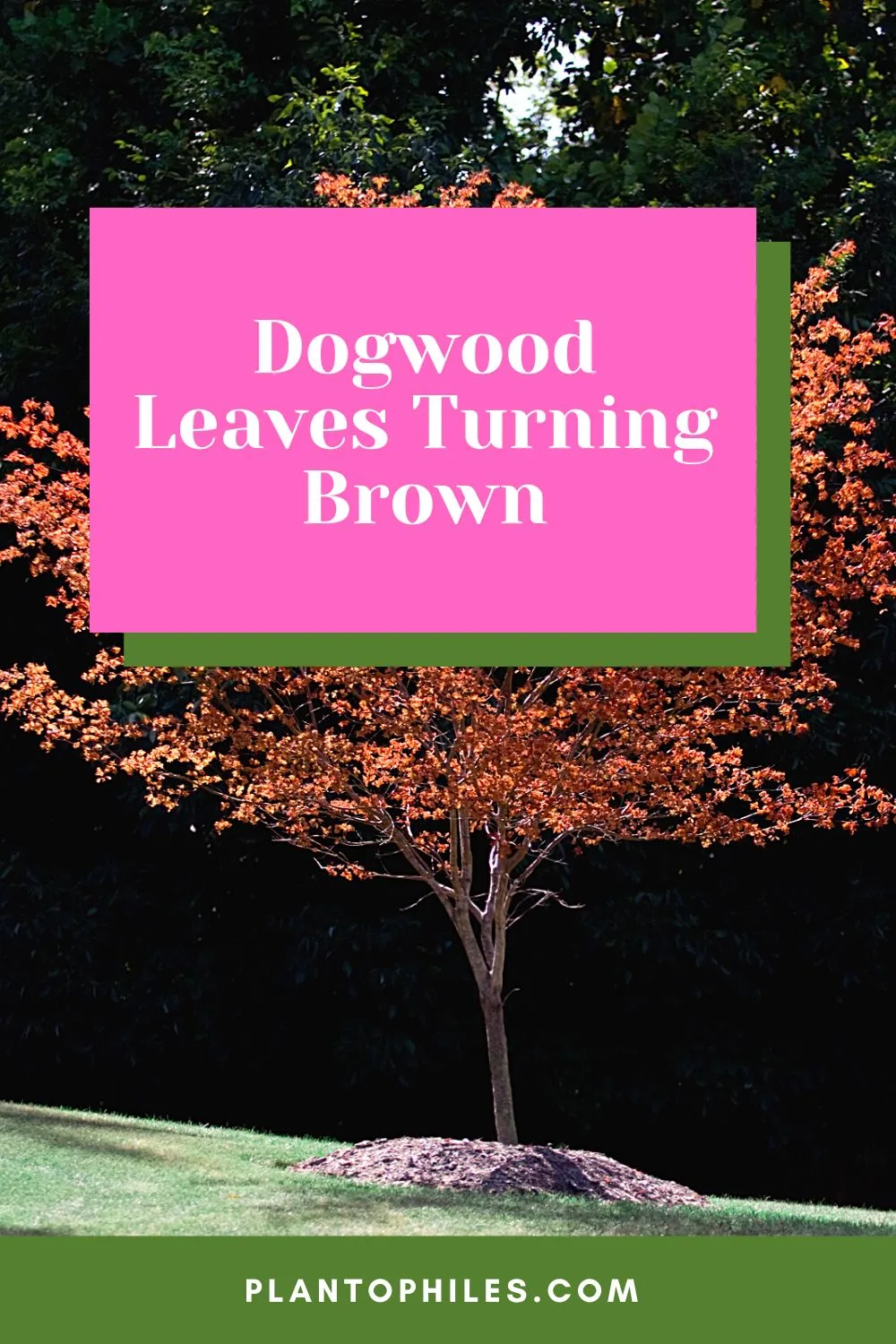
If the leaves on your dogwood tree are turning brown, it may not be a simple task to figure out why. However, it may be something simple that you can easily and quickly correct.
1) It may be getting too much water
Dogwood don’t like to be overwatered. If its base stands in the water, it will eventually start to rot, causing its leaves to turn brown.
Dogwood should only be watered semi-liberally and daily for the first 7-10 days after it’s planted.

After that, it should require watering twice weekly at most. Really, one good watering per week is sufficient and the most beneficial for dogwood plants.
2) The soil may not be right
It can depend a lot upon the soil your dogwood is planted in. The type of soil a dogwood is planted in has a lot to do with the plant’s health.
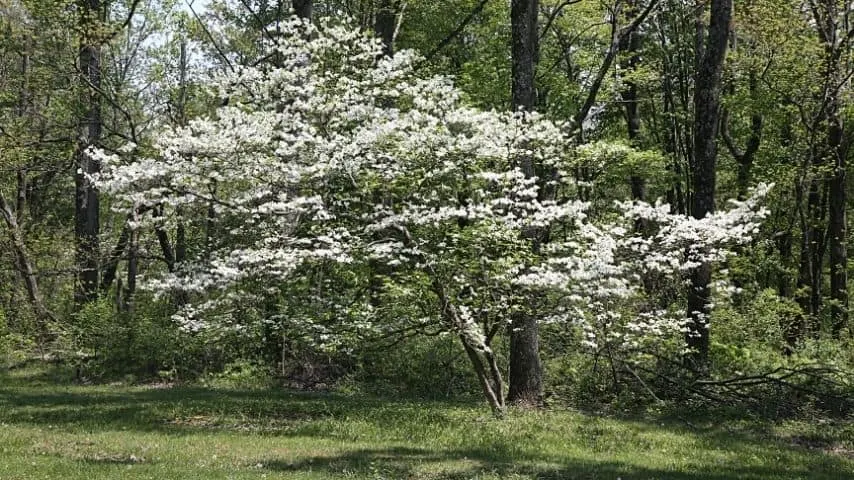
If the soil you’ve planted your dogwood in is under-fertilized, your dogwood may not be getting the nutrients it needs to thrive, causing its leaves to turn brown.
Alternatively, if the soil is overfertilized, your dogwood may be overwhelmed with nutrients, again, causing its leaves to turn brown. Too much of a thing, even if it’s good, can be harmful, too.
3) It may be leaf scorch
Though dogwood trees can sometimes tolerate full sun locations, they really prefer partial sun with partial shade, like behind taller trees.
By planting dogwood in full sun, you run the risk of them having to try to survive in overly dry soil.

They don’t like to be overwatered, for sure, but pomegranates need to stay hydrated as well. This type of browning is called “leaf scorch”.
4) You may have a pest or disease problem
Pests and diseases are other issues that plague dogwood. Let’s look at which ones they are.
a) Pests
Pests and insects are capable of causing damage to your beautiful tree. Most insect damage is present on the branches and trunk of the tree, and their damage is usually not major.
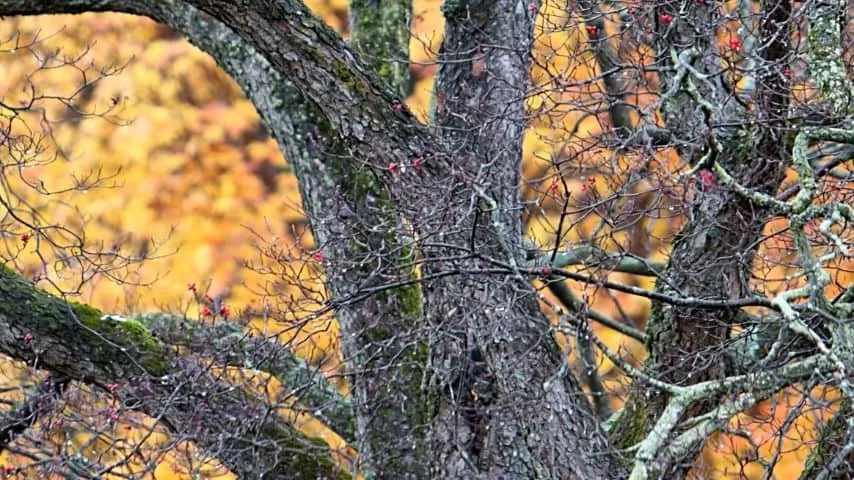
The most common insects that attack dogwoods are the dogwood club-gall midge, the dogwood borer, and scales.
b) Diseases
Also, diseases, mostly fungal diseases can attack different types of dogwood, and some are more susceptible than others.
Diseases like dogwood anthracnose, powdery mildew, spot anthracnose, and Cercospora and Septoria leaf spots can weaken and even eventually kill dogwood.
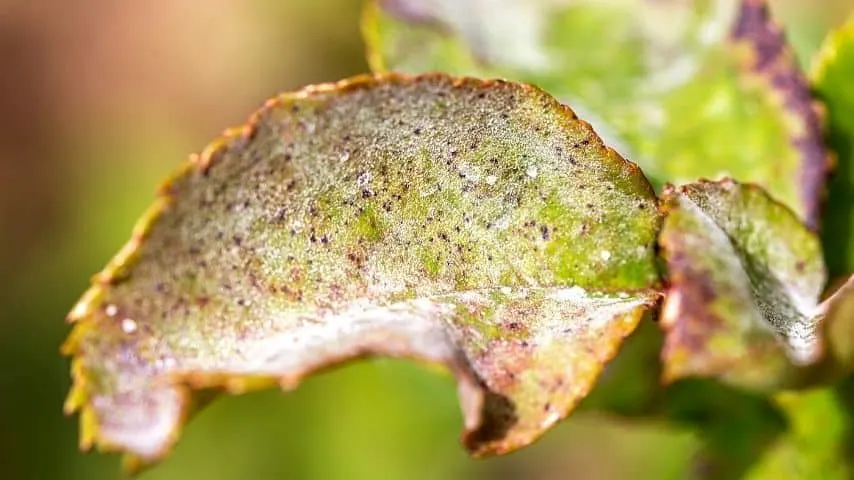
While the flowering dogwood is susceptible to a great many pests and diseases, the Cornelian cherry dogwood is almost impervious.
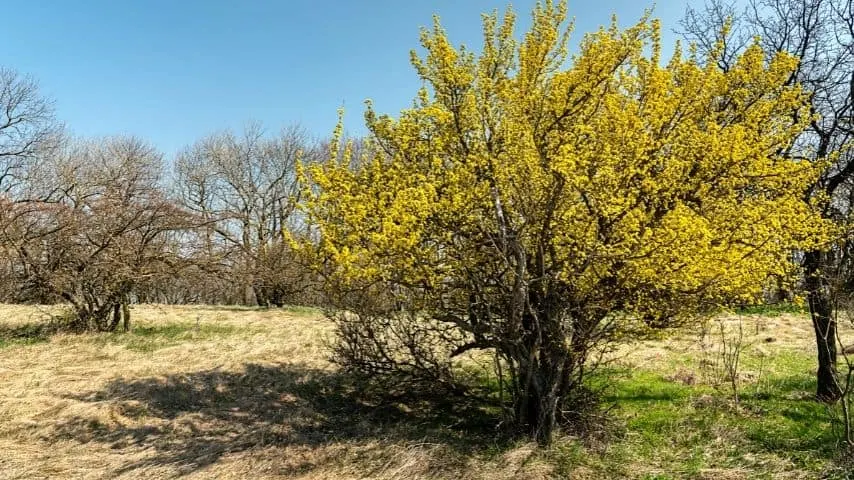
For information on how to battle pests and diseases that attack dogwoods, consult the Old Farmer’s Almanac or the Clemson University Home & Garden Information Center.
What a Dogwood is
The dogwood is considered a majestic ornamental. Essentially, that term describes “a gorgeous tree to be revered and used to enhance the aesthetic of its environment”.
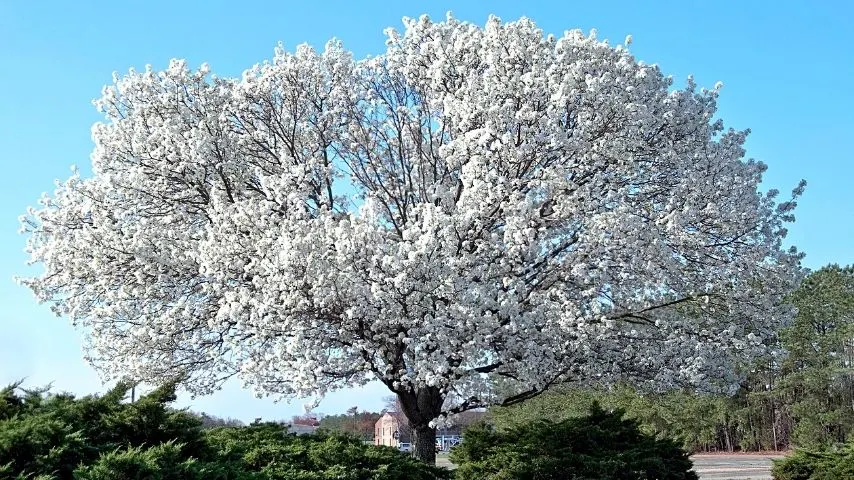
All dogwood trees need is ample sunshine and water to thrive. However, in extremely dry or wet conditions, you may have trouble growing your dogwood.
How to Plant a Dogwood Tree
Those who have dogwood trees disagree as to whether the plant is finicky. They, in some cases, can be affected by minerals in the water or a fluctuation in soil nutrients.
Most will tell you, though, that the dogwood is not difficult to grow into a monumental tree. Its rapid growth and glorious splendor are virtually unmatched by its peers.
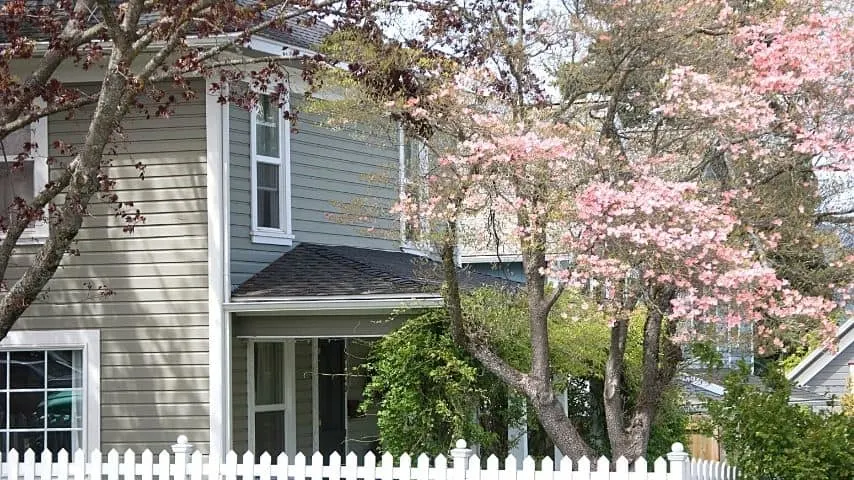
You won’t need to do much pruning.
See that your dogwood is planted in well-drained, slightly acidic (loam [equal portions of clay, silt, and sand]).
Dogwoods have shallow roots, so they dry out easily. Water twice per week at minimum and more frequently in arid times of year or drought conditions.
In the late wintertime, remove broken and dead branches, and prune the plant to get the shape of the tree or shrub you desire.
If your dogwood is dying the following article might help you to save it.
Where Best to Plant My Dogwood
To reiterate, dogwood trees need only partial sun, so plant them where taller trees or buildings can help shade them. Screening can be used, if necessary.
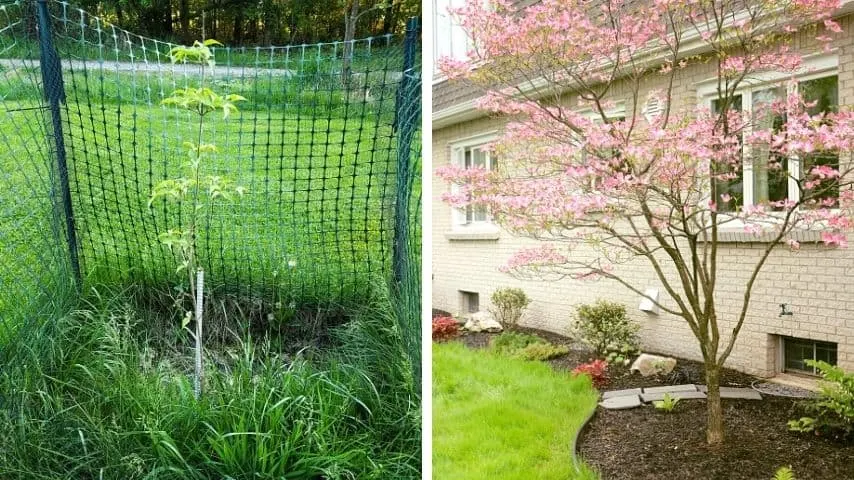
However, if you plant near a building, remember to water more often than you otherwise would, as many buildings can emit heat, which will dry out your dogwood tree.
Mix compost, or possibly coffee grounds, or pine needles into the planting soil to increase the acidity level.
How to Water my Dogwood
Water your dogwood tree well after you plant it, and water it each day for around 21 days. Afterward, once weekly for temperate climates and 3-4 days per week should be sufficient.
Also, be consistent with your watering by setting up a time schedule, and this chart will help you keep track.
Spread mulch around the base of your dogwood, but arrange it so that it doesn’t touch the tree trunk.
The reason you need to do this is that abrasions can be the result of mulch rubbing against the tree trunk. These abrasions can cause dogwood to become vulnerable to diseases and pests.
Read about why dogwood leaves are turning red.
Frequently Asked Questions about Dogwood Leaves Turning Brown
Are dogwood trees native to the US?
Seventeen dogwood types are native to North America. The common dogwood, Canadian bunchberry, Cornelian cherry, flowering, Kousa, gray, mountain, pagoda, red twig, rough leaf, stiff, and Swedish dogwoods are the 12 most common.
Do dogwood trees really smell funny?
Dogwoods do have a distinct smell, but only for around 2 weeks of the year around pollination time. Depending upon the variety of dogwood and the nutrients it receives, it can emit an odor spanning from sweet or flowery to rotten fish or sperm.
Which of the dogwood berries is edible?
While some are edible, like the Canadian bunchberry, be aware of which type of dogwood tree berry you are eating, as some, like the common dogwood, have quite an unpleasant taste. Others, like the flowering dogwood, are mildly toxic, yet others are edible only to birds like the gray dogwood.
Read more about how to care for Dogwood trees.
Conclusion To Dogwood Leaves Turning Brown
Dogwood leaves are turning brown for the following reasons:
- Overwatering
- Underwatering
- Pests
- Overfertilization
- Planted in the wrong space
- Too much sun
- Wrong soil

Daniel has been a plant enthusiast for over 20 years. He owns hundreds of houseplants and prepares for the chili growing seasons yearly with great anticipation. His favorite plants are plant species in the Araceae family, such as Monstera, Philodendron, and Anthurium. He also loves gardening and is growing hot peppers, tomatoes, and many more vegetables.


